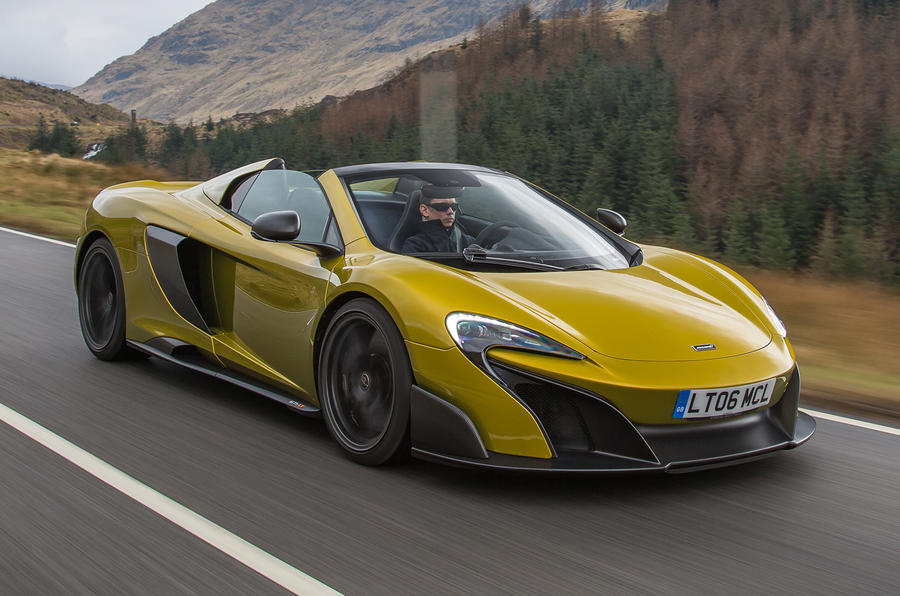What is it?
Special. Open. Unavailable. A McLaren 675LT Spider. When McLaren launched the 675LT coupe, it said the car had a significant breadth to its character. That, yes, the 675LT was a track-focused variant of the 650S – 100kg lighter and 33% new, stiffened, lightened, honed, poised – but that it was still at the habitable end of the supercar scale.
It was a car that remained comfortable on bad roads, McLaren’s people said. It was a car whose seats remained cosy even over long distance, they said. Whose satellite navigation and stereo and air conditioning worked a treat, they said. And then they said: “Here’s Silverstone. Fill your boots.” So we never found out about the rest.
Today is different. Today is the chance to see the side of the car that McLaren said existed, but that we were too busy exploring the Longtaily side of things to notice. LT, Longtail, is the McLaren equivalent of Porsche’s GT3, you see. Silverstone brought out that side of it. In fact, the LT coupé, as we discovered last year, was turned up so far that it felt closer to the P1 than the 650S. Its handling was liberated. It was wild, fast and indulgently enjoyable.
These things are important to note because today’s drive is on the road only, and it’s raining heavily. The speed limit is 60mph and the car’s capable of reaching it in 2.9 seconds. Its own limit is 203mph. That’s a little lower than the coupé because this is the Spider – convertible to you and me – version of the 675LT that was inevitable from the moment McLaren sold all 500 coupes it intended to make, and found the phone hadn’t stopped ringing. Just 500 more, then, they said, we’ll make you 500 Spiders. The theme is the same, though: McLaren’s hope is that it feels the same to drive as the LT coupe.
Like the coupe, then, the 675LT Spider is 100kg lighter than the 650S Spider, which means it’s 40kg heavier than the respective coupe. The roof is electrically operated, and there’s also a back window which can be lowered separately, if want to allow in only more exhaust noise, not air or rain. The titanium exhaust you’ll be hearing more of is shared with the 675LT coupe, as are the vast majority of other changes: suspension that is 20mm lower, a front track 20mm wider, downforce increased by 40%, and spring rates increased – 27% at the front, 63% at the rear – to cope with increased aero load, and steering that’s quicker than a P1’s. All very ‘GT3’, is Longtail. We’ll use the name again, they say. (I rather like the idea of a 595LT, I say.)
































Join the debate
Add your comment
Fuel flap